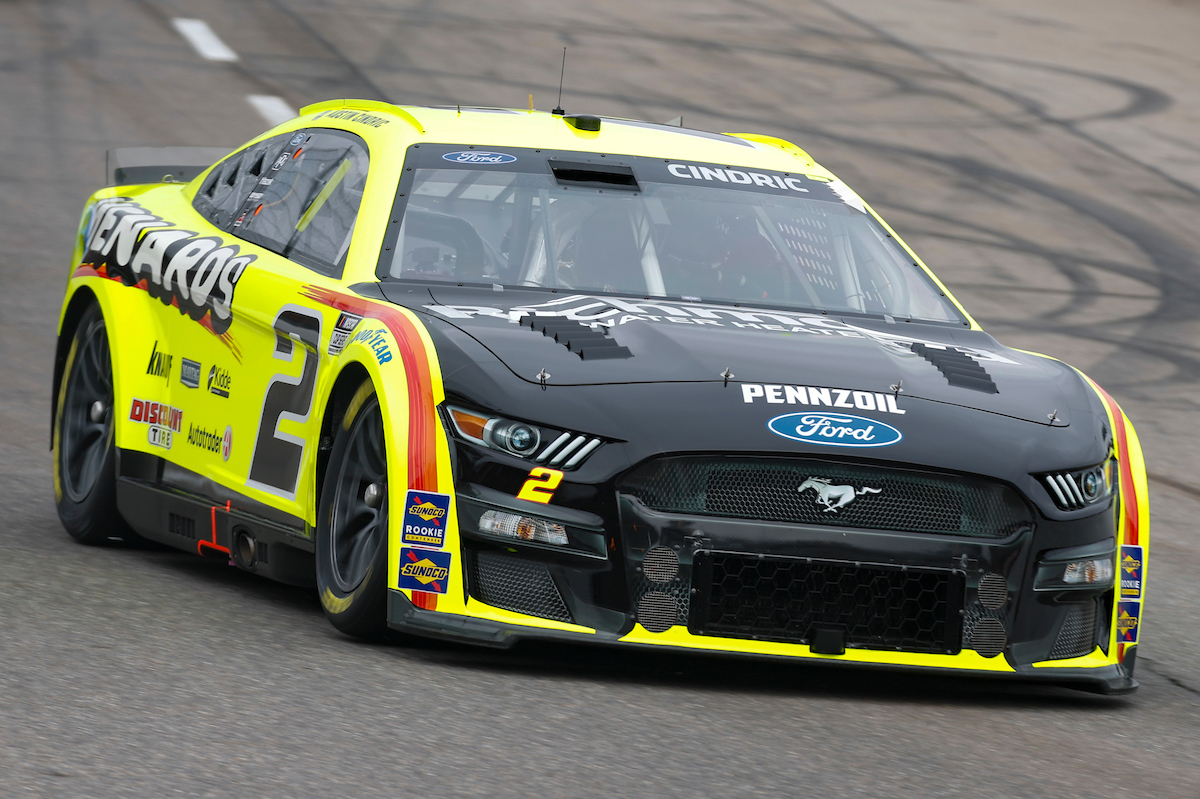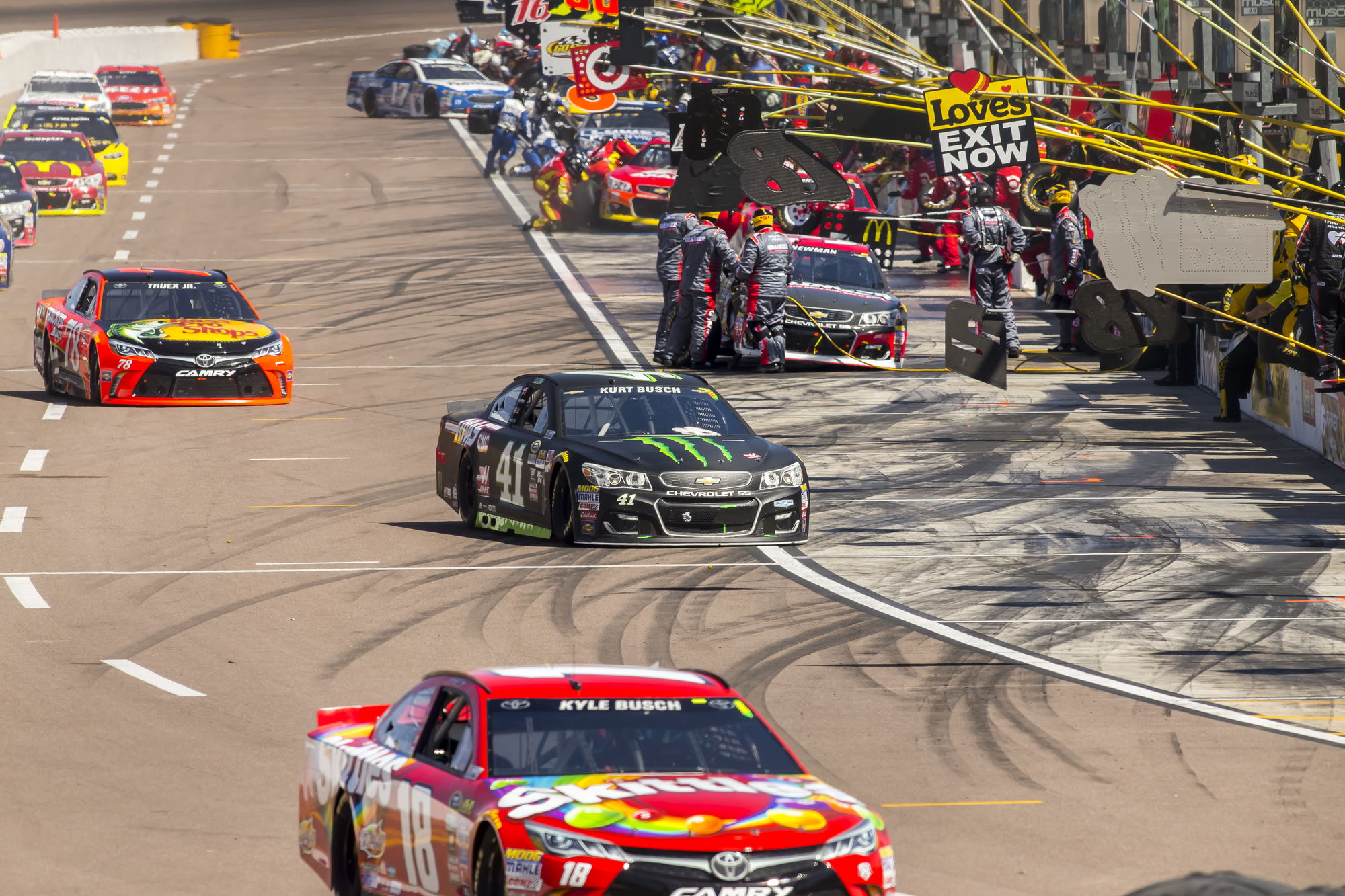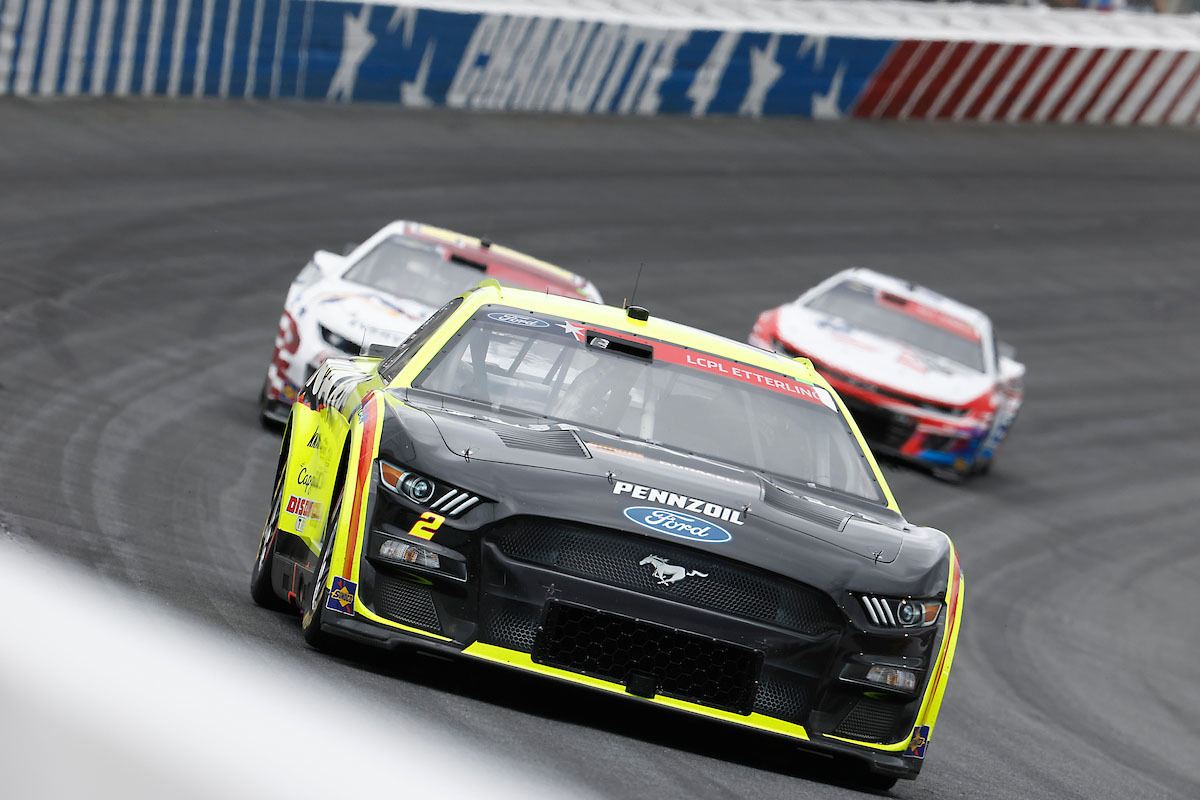Why Do NASCAR Helmets Have Tubes? Understanding Driver Cooling Systems
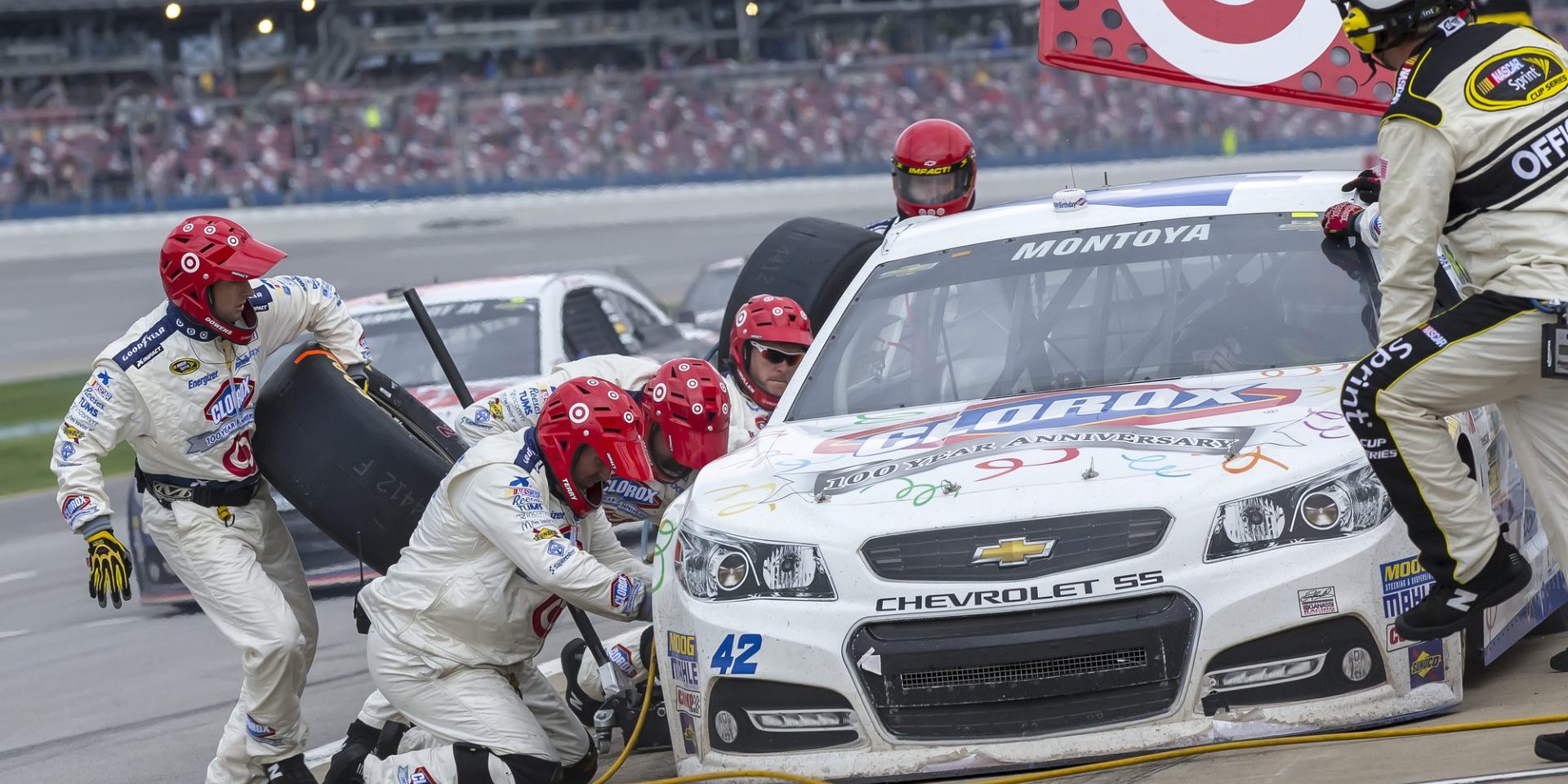
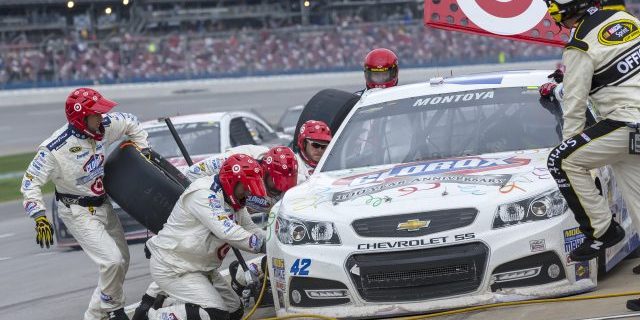
NASCAR drivers endure extreme conditions during races, and their safety gear is designed to offer protection as well as comfort under the rigorous demands of the sport. The helmets worn by NASCAR drivers are a critical element of their safety equipment. These helmets are not only built to withstand significant impacts and prevent penetration by debris but also come with a tube attached. This tube serves a vital function: it’s connected to a ventilation system that provides a stream of air to help drivers manage the intense heat inside the race car.
Temperatures inside the vehicles can soar, sometimes reaching as high as 140 degrees Fahrenheit. The cooling system connected to the helmet helps by blowing air on the driver’s face, which is both refreshing and necessary to prevent heat exhaustion. Additionally, the helmet’s tube can also function as part of a filtering system, delivering cleaner air to the driver and preventing the inhalation of noxious fumes, which is a significant health concern during a fire or when cars are in close quarters on the track. Safety standards in NASCAR are stringent, and the helmets, along with other fire-retardant gear, play a crucial role in safeguarding drivers during the races.
Table of Contents
Design and Functionality of NASCAR Helmets
NASCAR helmets are sophisticated pieces of gear that have evolved over time to ensure driver safety and comfort during intense races. They have been engineered to address extreme conditions and the high speeds of racing.
Air Tubes and Ventilation
Modern NASCAR helmets are equipped with air tubes to circulate cool air inside the helmet, maintaining a comfortable temperature for the driver. Ventilation systems play a crucial role in reducing the risk of driver fatigue by mitigating the excessive heat that can build up during a race.
Material and Build
Constructed from advanced materials like carbon fiber, nylon, and Nomex, NASCAR helmets offer a sturdy yet lightweight solution for head protection. Carbon fiber is prevalent for its high strength-to-weight ratio, making it ideal for use in high-speed motorsport environments.
Integrated Safety Features
A key safety feature integrated into NASCAR helmets is the HANS device (Head and Neck Support device) compatibility, which prevents excessive head movement during crashes. Helmets also incorporate visors made from strong materials like Lexan to shield drivers from debris and provide a heat shield for protection against high temperatures.
Customization for Drivers
The helmets are often tailor-made for individual drivers. Personalization includes precise fitting to the driver’s head shape, preferred padding options, and custom paintwork that reflects personal styles or team colors. Notable drivers like Kurt Busch and Alex Bowman often feature distinctive designs that appeal to their fan base.
Visibility and Protection
Visibility is paramount in racing helmets, with wide-eye openings and clear, distortion-free visors to provide an unobstructed view. The visors are treated with anti-fog and anti-scratch coatings to maintain visibility regardless of the racing conditions. Helmets cover the entire head, with many drivers opting for full-face helmets for enhanced protection.
Communication Systems
Effective communication with the crew chief and team members is essential during NASCAR events. Helmets are, therefore, fitted with advanced communication systems involving microphones and earpieces that enable drivers to stay in contact with their crews and receive vital information during the race.
Racing Gear and Personal Equipment
In the high-stakes environment of NASCAR racing, driver safety is of top priority. The racing gear and personal equipment are designed with advanced safety features to protect drivers from fire and impact.
Fire-Retardant Racing Suits
NASCAR drivers wear fire-retardant suits made of Nomex, a material known for not supporting combustion. These suits are crucial for driver safety, as they can resist high temperatures and protect against burns in the event of a fire.
Safety Harnesses and Restraints
Harnesses and restraints play a vital role in driver security. Drivers use a six-point harness, which is more comprehensive than traditional seat belts, offering additional attachment points that secure the hips, shoulders, and legs. These additional points help to distribute forces more evenly across the driver’s body during a crash.
Gloves and Footwear
Gloves and footwear are made from fire-retardant materials, providing an additional layer of protection. Drivers’ gloves ensure a firm grip on the steering wheel while insulating hands from both heat and potential injuries. Similarly, specialized shoes protect the driver’s feet and allow optimal control over the vehicle’s pedals.
Additional Protective Gear
Additional safety equipment includes features such as window nets which protect the driver’s head and arms from being ejected during an accident. Protective padding around the rib cage and shoulders further shields drivers from the force of collisions.
Regulations and Standards
NASCAR has established a comprehensive set of requirements for helmets to enhance driver safety, which includes the mandatory use of tubes for ventilation and communication.
NASCAR’s Safety Protocols
Helmets: To protect drivers during high-speed races, NASCAR mandates the use of helmets that are rigorously tested to withstand multiple impacts and prevent penetration from debris. Helmets must be full-face to offer maximum coverage and are often equipped with a HANS device to secure the head and neck upon impact.
Helmet Tubes: The tubes attached to NASCAR helmets serve dual functions; they connect to an air system that provides the drivers with clean air, reducing the risk of inhaling toxic fumes and helping to manage temperature inside the helmet. Additionally, they are part of the in-car communication system, which is crucial for drivers to maintain contact with their pit crews during the race.
Safety Features on the Track: In its commitment to safety, NASCAR mandates the implementation of SAFER barriers, which are energy-absorbing barriers placed in front of the concrete walls around the track. This technology helps reduce the force of impact when cars collide with the walls, thereby providing another layer of safety for the drivers.
Comparison with Other Racing Series: Unlike NASCAR, which runs predominantly on oval tracks requiring specific safety measures like SAFER barriers, series like Formula 1 and IndyCar operate mainly on road and street circuits. Each racing series adapts its safety regulations and helmet standards to suit the unique demands of their respective environments.
Seat and Wrap Around: NASCAR vehicles are equipped with specifically designed seats that include wrap-around protection for added support. This design helps shield the driver during collisions, functioning in tandem with the helmet and other safety gear to minimize injury risk.
Through rigorously enforced regulations and ongoing innovation in safety standards, NASCAR ensures both driver protection and adherence to high safety standards within the motorsport industry.
Race Conditions and Driver Safety
In NASCAR, driver safety under intense race conditions is a primary concern. Different elements, such as track safety features and the driver’s equipment, work together to minimize risk during high-speed races.
Track Safety Features
Tracks today are outfitted with advanced safety barriers designed to reduce the force of impact when a car hits the walls. One noteworthy innovation in track safety is the SAFER barrier. SAFER, standing for Steel and Foam Energy Reduction, these barriers consist of steel tubes backed by foam blocks. They are specifically engineered to absorb and dissipate energy upon the impact of a crash, significantly moderating the potential damage and injury to the driver.
The Iowa Speedway is amongst those tracks equipped with SAFER barriers, ensuring that any collision has a reduced risk of injury to the drivers. Along with barriers, the tracks are kept free from debris during races, as stray objects can pose a significant danger at high speeds.
Race officials and safety crews are always on alert to promptly respond to any on-track incidents, ensuring that drivers can compete with a focus on speed and competition rather than concern for their personal safety.
Notable NASCAR Drivers and Teams
The performance of NASCAR teams is closely tied to the skill of their drivers and the strength of their sponsorships.
Teams and Sponsorships
Stewart-Haas Racing is known for fielding competitive cars in the NASCAR Cup Series, with Kevin Harvick driving the Ford Mustang. Team Penske, another leading Ford team, adds to the manufacturer’s success with drivers like Austin Dillon.
Hendrick Motorsports represents the powerhouse of NASCAR, having secured multiple championships with drivers such as Chase Elliott and Kyle Larson who drive Chevrolet Camaros. The team’s success is bolstered by strong sponsorship deals and a commitment to innovation.
Joe Gibbs Racing fields Toyota Camrys with notable drivers including Denny Hamlin, Kyle Busch, and Martin Truex Jr.. Their continued presence at the front of the pack demonstrates Toyota’s competitive edge in the series.
Trackhouse Racing Team is also making waves with drivers like Daniel Suárez, showcasing Chevrolet’s commitment in a sport dominated by a handful of marques.
Richard Childress Racing, with drivers such as Tyler Reddick, maintains a strong presence with their Chevrolet cars, further intensifying the rivalry among top manufacturers.
Other teams like 23XI Racing, Spire Motorsports, Rick Ware Racing, JTG Daugherty Racing, and Richard Petty Motorsports also contribute to the diverse competitive field, each with their unique set of sponsors and drivers, including Bubba Wallace, Ricky Stenhouse Jr., and Chris Buescher that compete in the intense racing environments.
This competitive environment is fostered not only by the skillful drivers but also by the strategic partnerships with sponsors, which provide the financial support necessary to build and maintain high-performing vehicles for the NASCAR Cup Series.







